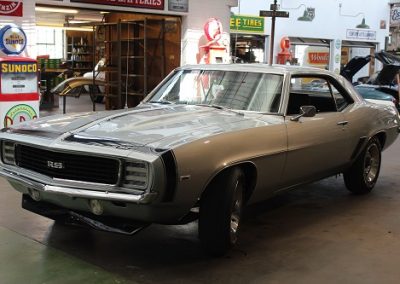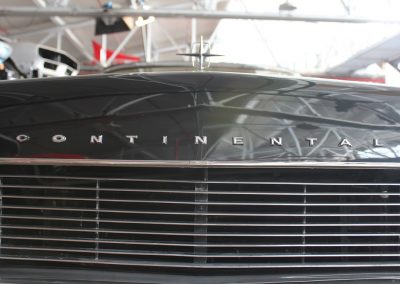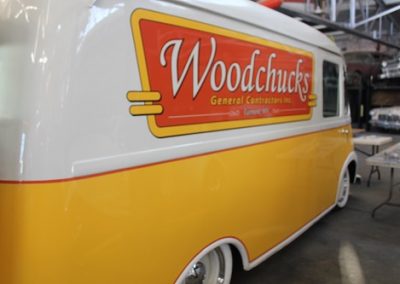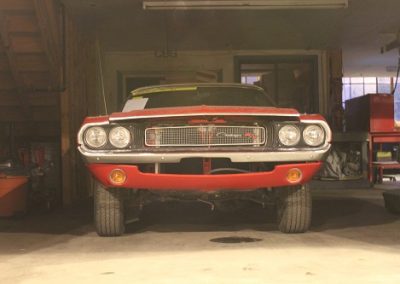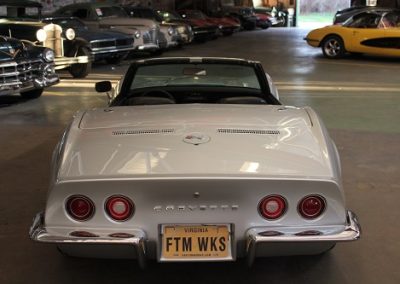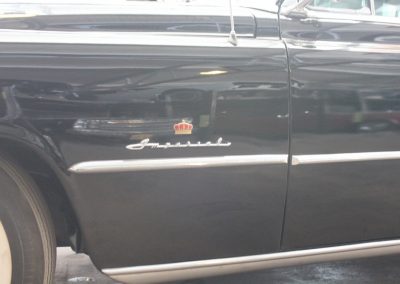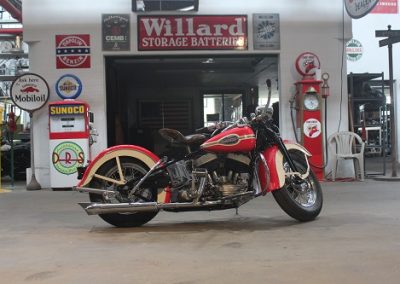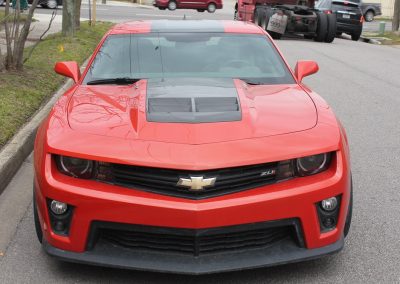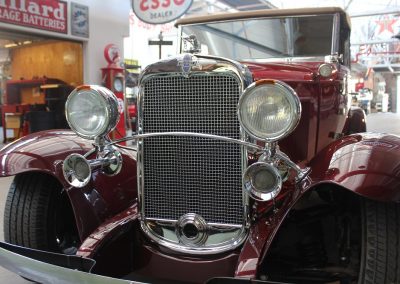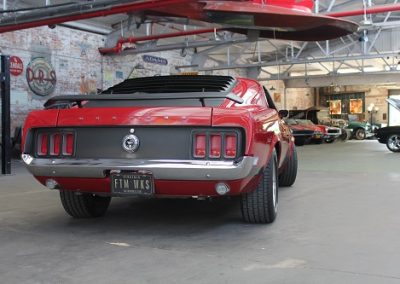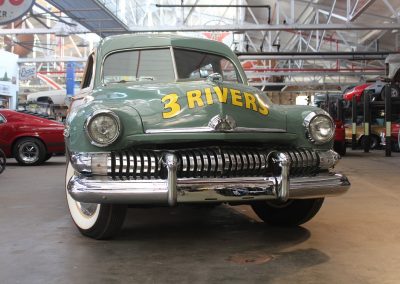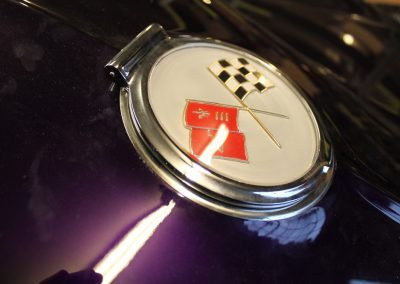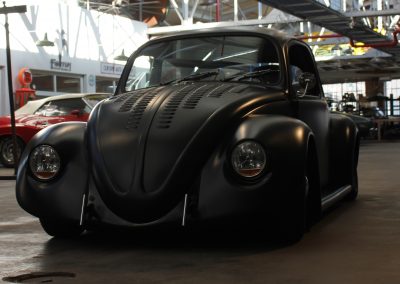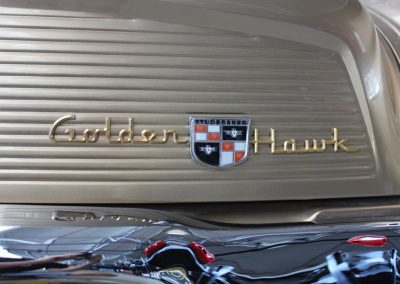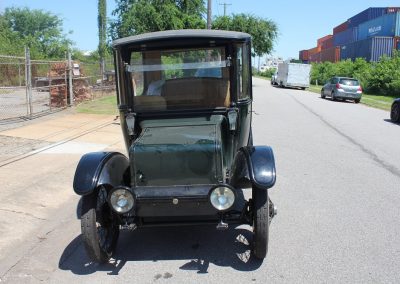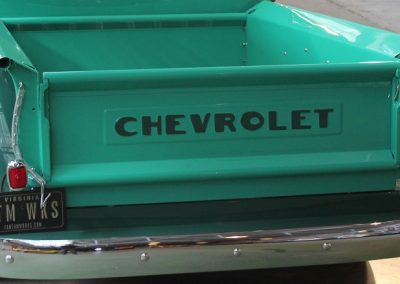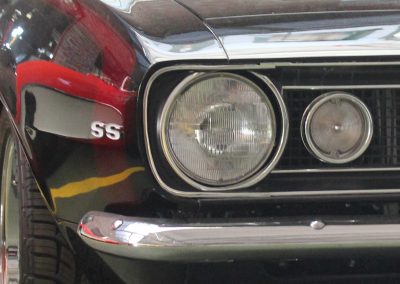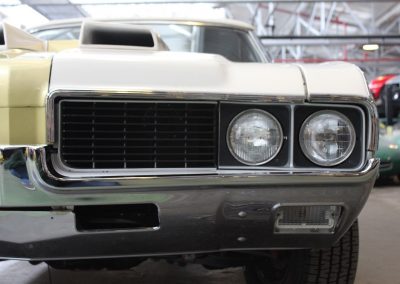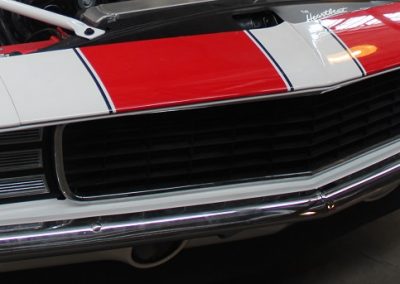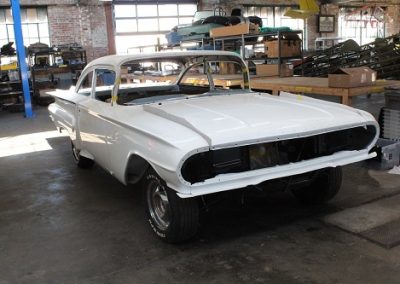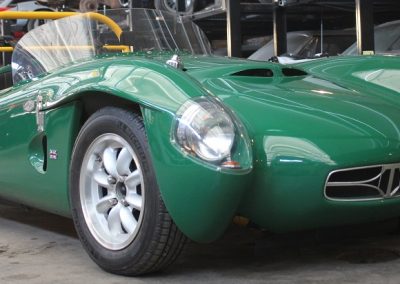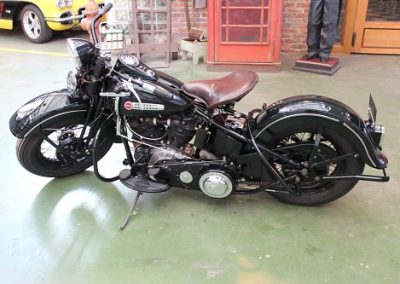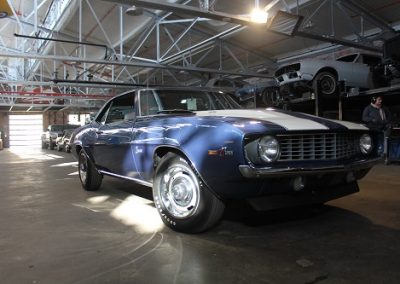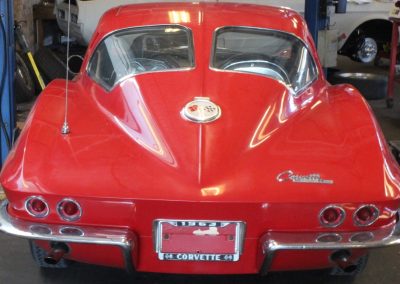1973 Plymouth Barracuda

As seen on Season Six of FantomWorks
Owner Insight:
Explore the Project Galleries
Arrival
Finish
The Plymouth Barracuda is a two-door car that was manufactured by Plymouth from the 1964 to 1974 model years.
The first-generation Barracuda, a fastback A-body coupe based on the Plymouth Valiant, had distinctive wraparound back glass and was available from 1964 to 1966.
The second-generation 1967 to 1969 Barracuda, though still Valiant-based, was heavily redesigned. Second-generation A-body cars were available in fastback, hardtop, and convertible versions.
The third-generation 1970 to 1974 E-body Barracuda, no longer Valiant-based, was available as a coupe and a convertible, both of which were very different from the previous models. The final model year for the Barracuda was 1974.
With a new grille and single headlights (very similar to the 1970 model) and four circular taillights for 1972, the Barracuda would remain basically unchanged through 1974, with new body side stripes, and minor changes to the bumpers to conform with federal impact standards being the only significant variations. Big block engines (383, 440, & 426 Hemi), heavy duty suspensions and rear axles, and large/wide tires mounted on 15″ x 7″ wheels were no longer offered. Additionally; the convertible model was dropped; though a few late build 1971 convertibles were built with 1972 grills and back end panels and provided to Paramount Studios for TV and movie work; being seen on Mannix, The Brady Bunch and other shows. Convenience and comfort items such as power seats, power windows, and upgraded interior (leather seats and plush carpeting) options were dropped, though heavy-duty air conditioning and a sun roof could still be ordered. For 1972 only, three engine choices were offered: a 225 six, the 318 (base engine for both ‘Cuda and Barracuda), and a revised 340 detuned to meet emission standards. In addition, all three were tuned to run on low/no-lead gas and were power rated on the NET (installed) method. Three transmissions were offered: a 3-speed manual, the Torqueflite automatic, and the Hurst shifter equipped four-speed. For 1973 federally mandated safety bumpers were added front and rear, and the 225 six was dropped, with the 318 and 340 V8s being the only engine choices. For late production 1973 cars, and for 1974 a slightly more powerful 360 V8 (245 E bodyhp) replaced the 340. As since 1970; optional was a four-speed manual transmission (equipped with a Hurst shifter) mated to a performance ratio (3.55 to 1) rear axle for the 340 and 360 engines, though as many as three cars (in each of 1973 and 1974) were built with the 318 engine and Hurst 4-speed thru special orders or factory errors.
As with other American vehicles of the time, there was a progressive decrease in the Barracuda’s performance. To meet increasingly stringent safety and exhaust emission regulations, big-block engine options were discontinued. The remaining engines were detuned year by year to reduce exhaust emissions, which also reduced their power output. There was also an increase in weight as bumpers became larger and, starting in 1970 E-body doors were equipped with heavy steel side-impact protection beams. Higher fuel prices and performance-car insurance surcharges deterred many buyers as the interest in high-performance cars waned. Sales of pony cars were on the decline. Sales had dropped dramatically after 1970, and while 1973 showed a sales uptick, Barracuda production ended 1 April 1974, nine years to the day after it had begun.










